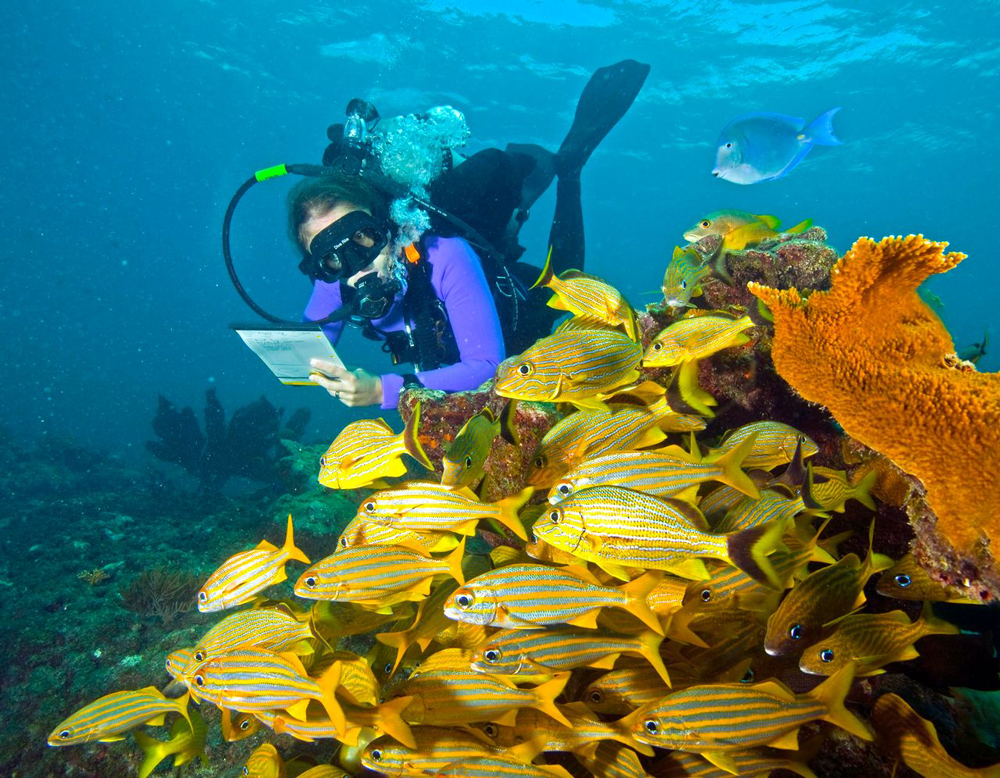Some of the world’s most incredible natural resources can be found in the Florida Keys — including the continental United States’ only living coral barrier reef, an environmental treasure that parallels the chain of islands.

A Key deer eyes her surroundings on Big Pine Key. Indigenous to the lower Florida Keys, the tiny deer are among the Keys’ most engaging inhabitants. (Photo by Andy Newman, Florida Keys News Bureau)
Those of us lucky enough to live in the Keys cherish our close-to-nature lifestyle, and we’re committed to protecting those resources. And eco-conscious visitors can share our commitment while having meaningful and memorable vacations.
During an escape to the Keys, you can discover the islands’ unique natural world and its inhabitants through soft-adventure activities, eco-travel experiences, backcountry kayaking or paddleboard treks, wildlife refuge explorations, visits to environmental attractions and getting to know rescued sea turtles and wild birds at rehabilitation centers.
Once you make a connection with the Keys’ fascinating environment, chances are you too will feel passionate about protecting and preserving it through positive eco-practices.
A passion for protecting our islands’ natural world actually dates back more than a century. The Key West National Wildlife Refuge was established in 1908, launching a focus on long-term environmental stewardship.
Since then, milestones have included the 1957 establishment of the National Key Deer Refuge to protect and preserve habitats for wildlife — especially the tiny Key deer that live only in the Lower Keys. These shy, engaging deer were once almost extinct, but today the population has rebounded to nearly 800.

Kayakers paddle along mangroves at John Pennekamp Coral Reef State Park in Key Largo. The nation’s first underwater preserve encompasses 70 square miles of coral reefs, seagrass beds and mangrove forests. (Photo by Bob Care, Florida Keys News Bureau)
In 1963 Key Largo became the site of America’s first underwater preserve: John Pennekamp Coral Reef State Park. You can observe the park’s abundant wildlife through recreational experiences that include diving, snorkeling and kayaking a water trail.
In 1990 the U.S. government created the Florida Keys National Marine Sanctuary, protecting 2,900 square nautical miles of coastal and ocean waters including the prized coral reef. Not only does the sanctuary surround the entire landmass of the Keys, it also includes vast stretches of Florida Bay, the Gulf of Mexico and the Atlantic Ocean.
Inside its boundaries lie mangrove islands, historic shipwrecks filled with rare artifacts, tropical fish and other marine life — and divers and snorkelers from around the globe visit the Keys to view the extraordinary reef ecosystem in the sanctuary. Much like a tropical rainforest, it supports a huge diversity of plants and animals.
In recent years, experts have begun spearheading coral restoration efforts in Keys waters — steadily restoring endangered corals by replanting new growths from coral nurseries to the reef. At Key Largo’s Coral Restoration Foundation, educational programs let “citizen scientists” and recreational divers take part in coral restoration alongside marine scientists.

Like Keys residents, visitors too can connect with and protect the island chain’s fascinating natural world.
On Summerland Key, you can tour Mote Marine Laboratory’s Elizabeth Moore International Center for Coral Reef Research and Restoration to learn about the science behind coral restoration. Mote is currently working to restore 70,000 coral fragments along about 130 acres of the Florida Reef Tract.
In fact, there’s a remarkable variety of earth-and-sea-friendly options to enjoy while visiting the Keys. You might immerse yourself in “voluntourism” opportunities like helping in a coral nursery or at a wild bird rehabilitation facility, dive or fish with a certified eco-conscious “Blue Star” operator, chow down on sustainable food choices (think stone crab claws and locally caught fish), or experience unforgettable adventures like viewing playful dolphins in the wild.
To protect the Florida Keys’ natural resources, residents embrace a culture of conservation that underlies our lifestyle. As a mindful traveler who connects with this positive culture, you can help protect, preserve and even improve the 125-mile island chain for future generations.

